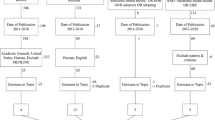Abstract
With escalating health-care costs in the United States, it is easy to understand why health-care service providers operations such as hospitals, primary care physician practices are heavily focused on controlling cost of services to consumers. But there is another very important component to the health-care service providers profit equation – revenue. There are many things a health-care service provider can do to influence revenue, and one of the most important is implementation of Electronic Health Records. Electronic health record (EHR) systems hold substantial promise for improving the quality of health care in the United States while decreasing costs. Despite such promise, adoption rates for these systems in the United States remain quite low, particularly among primary care physicians, with funding often cited as the most significant barrier to their adoption. This study analyses the costs and benefits of EHR systems and presents a cost-benefit model for making the business case for their implementation in primary care settings in the United States for increased revenues and quality services.











Similar content being viewed by others
References
Adler, K. (2004) Why it's time to purchase an electronic health record system. American Academy of Family Physicians, Family Practice Management 11 (10): 43–50.
Allscripts. (2005) Measuring Return on Investment and Project Success. An Excerpt from The Electronic Physician: Guidelines for Implementing a Paperless Office. Chicago, IL: Allscripts Healthcare Solutions.
Badger, S.L., Bosch, R.G. and Toteja, P. (2005) Rapid implementation of an electronic health record in an academic setting. Journal of Healthcare Information Management 19 (2): 34–40.
Barlow, S., Johnson, J. and Steck, J. (2004) The economic effect of implementing an EMR in an outpatient clinical setting. Journal of Healthcare Information Management 18 (1): 46–51.
Burt, C.W., Hing, E. and Woodwell, D. (2006) Electronic medical records use by office-based physicians: United States. National Center for Health Statistics, Division of Health Care Statistics, http://www.cdc.gov/nchs/products/pubs/pubd/hestats/electronic/electronic.htm, accessed 15 October 2006.
Charette, R. (2006) What happened to do no harm. CIO Magazine, 1 April, http://www.cio.com/archive/040106/keynote.html, accessed 15 October 2006.
Charette, R.N. (2006) Dying for data. IEEE Spectrum, October, http://www.spectrum.ieee.org/prirnt/4589, accessed 15 October 2006.
Cottrell, C.M. (2005) Document management: One paving stone in the path to EHR. Healthcare Financial Management, 1: 84–92.
DOQ-IT. (2006) Supporting care management: The role of electronic health record (EHR) systems, http://www.providersedge.com/ehdocs/ehr_articles/Supporting_Care_Management-the_Role_of_EHR_Systems.pdf, accessed 15 October 2006.
Dreyer, K., Mehta, A.Y. and Thrall, J. (2002) PACS: A Guide to Digital Revolution. New York: Springer.
e-MDs. (2006) What are you waiting for? Six ways to return on investment, http://www.e-mds.com/education/articles/roi.html, accessed 15 October 2006.
Electronic Health Records & Data Connectivity Subcommittee. (2005) Report to the 73rd Legislative Assembly: Electronic Health Records & Data Connectivity. Oregon Health Policy Commission, March, pp. 1–19.
Erstad, T. (2006) Analyzing computer based patient records: A review of literature. Journal of Healthcare Information Management 17 (4): 51–57.
Gupta, D. and Wang, L. (2008) Revenue management for a primary care clinic in the presence of patient choice. Operations Research 56 (3): 576–592.
Hawn, C. (2007) Cost of health-care system bugs employers. Financial Week, 24 September.
Healthcare Information Management Systems Society. (2003) EHR and the return on investment, http://himss.org/content/files/ehr-roi.pdf, accessed 15 October 2006.
Hozo, P., Djulbegovic, B. and Hozo, I. (2005) Estimating the Mean and Variance from the Median, Range, and the Size of a Sample. Indiana University Northwest, Department of Mathematics: Gary, IN.
Insure.com. (2008) Need a doctor? Call a lawyer, http://www.insure.com/articles/healthinsurnace/call-a-lawyer.html, accessed 28 October.
Krisberg, K. (2005) Improved Medical Technology could Affect Health, Lower Cost. Nations Health, American Public Health Association, http://www.medscape.com/viewarticle/515529, accessed 29 November.
Kumar, S. and Nunne, W.H. (2008) Measuring technical efficiency of specialty hospitals in the US. Journal of Revenue and Pricing Management 7 (2): 139–152.
Janas, J.J. (2004) Making the case for EHR ROI and quality improvement. (powerpoint presentation), Clinical Content Consultants, LLC.
Jha, A.K. et al (2006) How common are electronic health records in the United States? A summary of the evidence. Health Affairs Web Exclusive 25 (6): w496–w507.
Miller, R. (2007) MMIC to offer electronic medical record premium credit to policyholders. The MMIC Group, 11 September.
Miller, R., West, C., Brown, T.M., Sim, I. and Ganchoff, C. (2005) The value of electronic health records in solo or small group practices. Health Affairs 24 (5): 1127–1137.
Owens, W. and Richards, F. (2006) Doctors' digital duty, http://news.com.com/doctors+digital+duty/2010-1033_3-6114617.html, accessed 15 November 2006.
Porter, J. (2006) Let federal employees lead the charge for electronic health records. Government Computer News, 3 April, available at: http://gcn.com/cgi-bin/udt/im.display.printable?client.id=gcnn&story.id=40293, accessed 5 November 2006.
Schoen, C., Osborn, R., Huynh, P.T., Doty, M.M., Peugh, J. and Zapert, K. (2006) On the front lines of care: Primary care doctors' office systems, experiences, and views in seven countries. Health Affairs Web Exclusive, 2 November, pp. w555–w571.
Sidorov, J. (2006) It ain't necessarily so: The electronic health record and the unlikely prospect of reducing health care costs. Health Affairs 25 (4): 1079–1085.
State of Michigan. (2005) Information technology equipment life cycle. 22 February 2005, available at: http://www.michigan.gov/documents/Life_Cycle_Boilerplate_Report_86875_7.pdf, accessed 25 July 2008.
Still, T. (2005) Electronic health records can save lives and improve medical care. Wisconsin Technology Network, 8 February, available at: http://wistechnology.com/printarticle.php?id=1545, accessed 10 October 2006.
Wang, S.J. et al (2003) A cost-benefit analysis of electronic medical records in primary care. American Journal of Medicine 114 (5): 397–403.
Author information
Authors and Affiliations
Corresponding author
Rights and permissions
About this article
Cite this article
Kumar, S., Bauer, K. The business case for implementing electronic health records in primary care settings in the United States. J Revenue Pricing Manag 10, 119–131 (2011). https://doi.org/10.1057/rpm.2009.14
Received:
Revised:
Published:
Issue Date:
DOI: https://doi.org/10.1057/rpm.2009.14




